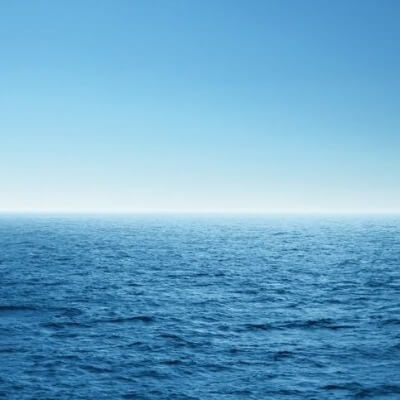
This web page contains ocean facts for kids and is an excellent resource for anyone of any age looking to learn about oceans. Our goal is to provide you with accurate, up to date facts about the Earth’s oceans. In addition to facts about oceans, we provide additional resources to help you with your research on these massive bodies of water.
The ocean facts below will help you learn about the oceans, how big the oceans are, how many oceans are there, what marine animals live in the ocean and other ocean related facts. We hope these ocean facts are interesting and help you learn more about these important bodies of water that make up the Earth’s hydrosphere.
If any of the below ocean facts are inaccurate, please contact us and let us know.
23 Ocean Facts for Kids
- Oceans are enormous bodies of water that collectively cover about 71% of our planet’s surface.
- Oceans make up around 97% of the Earth’s hydrosphere, which is the combined mass of water on our planet.
- The Earth’s oceans are estimated to have formed during the Hadean eon, which was about 4 billion years ago.
- The Earth’s oceans are home to at least 230,000 species, but since we’ve only explored about 20% of the planet’s oceans there could be millions of more species.
- The total volume of the Earth’s oceans is more than 320 million cubic miles. There are 1.1 trillion gallons in a cubic mile of water, that means the Earth’s oceans contain over 352 sextillion gallons, that’s 21 zeros!
- The oceans play an important role in the climate conditions of our planet. The currents of the oceans transfer warm water from the tropical regions into the polar regions.
- There are five major oceans on the planet Earth, and they are the Pacific Ocean, the Atlantic Ocean, the Indian Ocean, the Southern Ocean and the Arctic Ocean.
- The Pacific Ocean is the largest ocean and contains 50.1% of all ocean water on our planet.
- The Atlantic Ocean is the second largest ocean and contains 23.3% of all ocean water on our planet.
- The Indian Ocean is the third largest ocean and contains 19.8% of all ocean water on our planet.
- The Southern Ocean is the second smallest ocean and contains 5.4% of all ocean water on our planet.
- The Arctic Ocean is the smallest ocean and contains 1.4% of all ocean water on our planet.
- All the oceans on our planet are divided into four different zones.
- The five zones of an ocean are the sunlight zone, twilight zone, midnight zone, abyssal zone and hadal zone.
- The sunlight zone of the ocean is between the 0 and 660 feet. The sunlight oceanic zone receives sunlight, which can manipulate the temperature of the water and allow organisms to perform photosynthesis.
- The twilight zone of the ocean is between 660 and 3,300 feet. The twilight oceanic zone starts where only 1% of the sunlight is available and ends where no sunlight is available.
- The midnight zone of the ocean is between 3,300 and 13,100 feet. The midzone starts when there is no available sunlight. The only light that appears in the midnight zone is from bioluminescence species.
- The abyssal zone of the ocean is between 13,100 and 19,700 feet. The midnight zone is pitch-black, very few lifeforms life in this zone due to the crushing pressure from the water, near freezing temperatures and lack of oxygen.
- The hadal zone of the ocean is between 19,700 and 36,070 feet. The hadal zone reaches the bottom of the ocean and has temperatures slightly above freezing. The pressure from water at this depth is over 8 tons per square inch.
- The average depth of the world’s oceans is 12,100 feet.
- The deepest part of the world’s oceans is in the Mariana Trench in the western Pacific Ocean.
- The deepest part of the Mariana Trench is estimated to be around 36,070 feet.
- The first submersible vessel to reach the bottom of the Mariana Trench was the Trieste in 1960.
Ocean Pictures
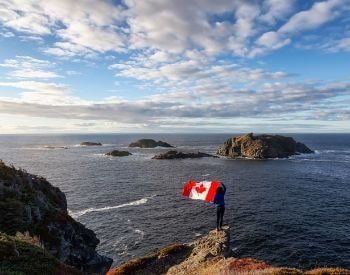
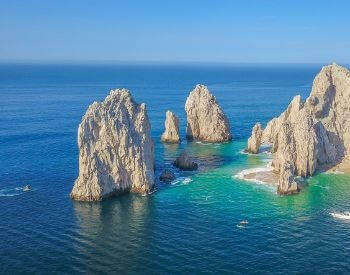
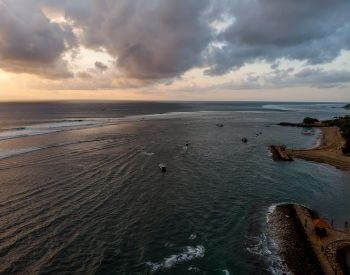
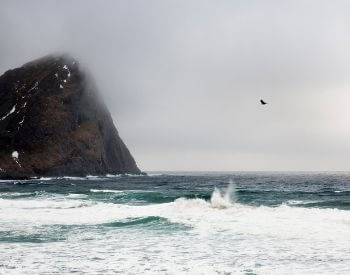
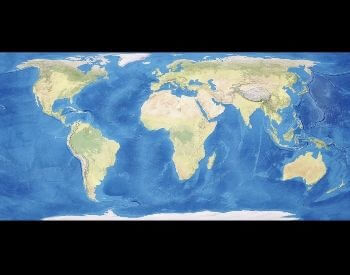
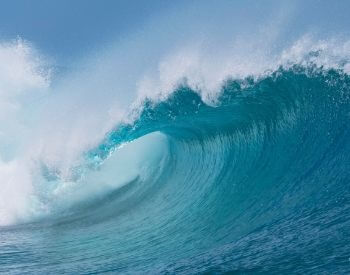
Additional Resources on Oceans
- About Oceans – Discover more amazing facts about the planet’s oceans on the National Geographic website.
- How Many Oceans are There? – Learn how many different oceans there are on the NOAA website.
- Ocean Data – Are you looking for raw data on the Earth’s oceans? Then you want to visit the U.S. Data website!
- Ocean – Wikipedia – Find more information and facts about the Earth’s oceans on the Wikipedia website.
